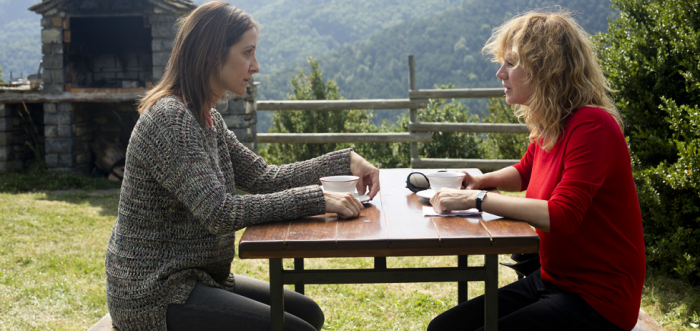
It is always interesting when two artists with aesthetics that are both very particular and very different from one another are hurled together. We saw it with Baz Luhrmann and F. Scott Fitzgerald in the very questionable 2013 film, The Great Gatsby, and it happens again in Julieta, Pedro Almodóvar’s adaptation of three short stories from Alice Munro’s 2004 book Runaway. The three stories, “Chance”, “Soon” and “Silence”, revolve around the character Julieta, and each is set during a different time in her life. “Chance: takes place when Julieta is in her early twenties and meets her future husband on a train, while “Soon” is about her returning home to the small town she grew up in to confront the fact that her parents have changed, and that her father is being punished by his cloistered community for having a daughter who is both unmarried and with child. “Silence” is about Julieta’s relationship with her daughter, though their relationship is largely absent from the story. Instead, what we are faced with is her daughter’s absence and the haunting effect this has on Julieta.
It is this final story that inspires the crux of Almodóvar’s film: from its outset to its end, there is a sinister feeling that something is not quite right. There is the hint of an unspeakable horror that lurks beneath the surface, promising to be unveiled at every plot turn. And yet, by the end of the film it becomes apparent that there is no horror. There are plenty of small misunderstandings, but they are slightly uncomfortable at best. The upshot of this is that we are left with the sensation of emerging from a dream, groggily wondering whether anything in fact actually happened.
Much like Almodóvar’s other films (The Skin I Live In, Volver), Julieta is visually stunning. Almodóvar’s inimitable deployment of colour – splashings of vibrant reds, yellows and blues – insinuates tension and links disparate scenes with similar emotional undertones. It is an effective way of appropriating Munro, who has a penchant for subtlety and quietness – her plots unfold in those compact spaces between psychological and emotional realms, and her revelations bounce about until no story can be fully appreciated without another resonating in the background. Almodóvar’s aesthetic has a similar effect: blue evokes Julieta’s time by the sea, red evokes her love affair with Lorenzo and yellow evokes her relationship with her daughter, Antia. The colours thus manifest as motifs, allowing the scenes to reverberate in the same way they do in Munro’s rich stories.
And yet, Julieta is not an entirely convincing film, its plot unravelling like a drab piece of string. The psychological dynamism of Munro’s stories does not translate well to the film, and it is difficult to empathise with any of the characters. Julieta is played as her young self by Adriana Ugarta, and as her older self by Emma Suàrez. The transition is well-done and both actresses are adept at playing Julieta in her most depressed states. Rather, it is the theme of obsession, especially Julieta’s obsession with finding Antia, that does not translate well. Their relationship is left unexplained. We see hints of it, shot through rows of doorways, but it is never accessible to us as the viewer. Perhaps this was Almodóvar’s intention – his elliptical portrayal could be seen as his stylistic conception of trauma, or maybe he is suggesting that the reason Antia leaves is because Julieta could never truly connect to her, being so absorbed in her own depression – but the film leaves its viewer with the feeling of a hole that cannot be filled.
A generous interpretation of this might be that it was intentional; that the gaping feeling is supposed to emulate the sensation of loss Julieta feels when her daughter leaves. Even if this were Almodóvar’s true intention, it leaves his film starkly wanting of intimacy.
Around the Staff
| Jessica Ellicott | |
| Luke Goodsell | |
| Jake Moody | |
| Jaymes Durante | |
| Mei Chew | |
| Megan Nash | |
| Virat Nehru |
